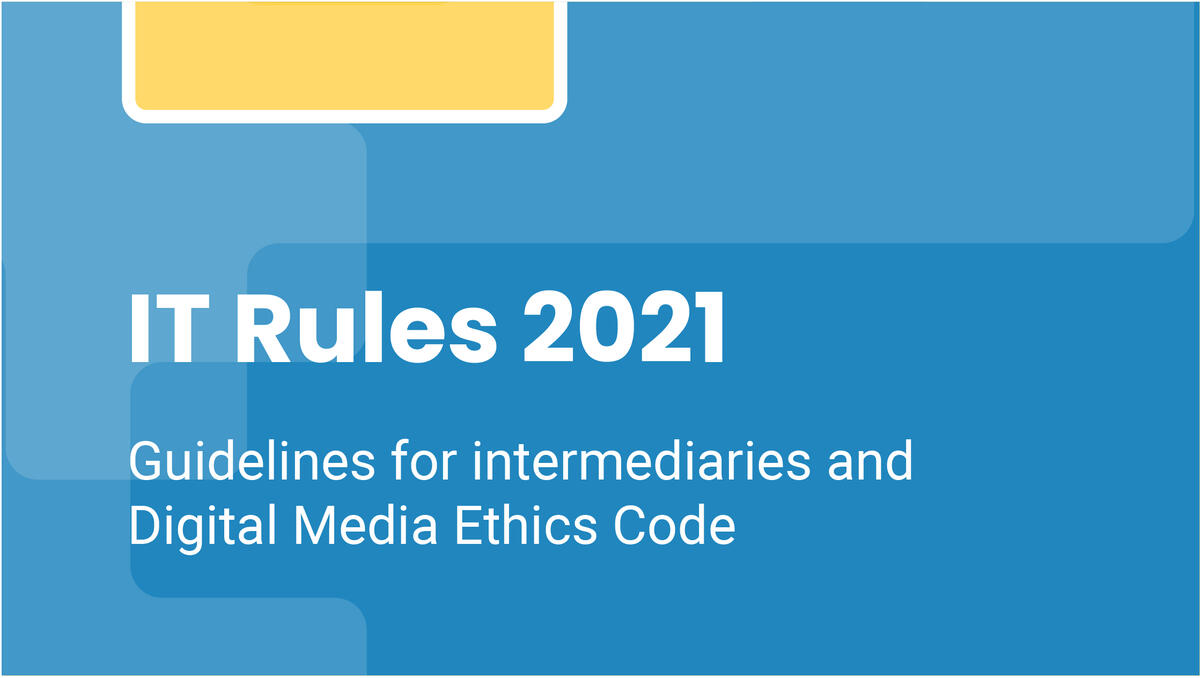
Jul 2021
28 Mon
29 Tue
30 Wed
1 Thu
2 Fri
3 Sat 04:00 PM – 06:00 PM IST
4 Sun
Oct 2021
25 Mon
26 Tue
27 Wed
28 Thu 07:00 PM – 08:00 PM IST
29 Fri
30 Sat
31 Sun
Submitted Sep 22, 2021
The IT Rules, Intermediary Guidelines 2021, have a far-ranging impact on social media apps, digital news and content, and cloud hosting providers in the country. The Rules could potentially affect a far wider section of the startup and SME sector in India given that many of these organizations produce content in one form or another which can be regulated. While the legality and ethicality of the Rules themselves are in question, respondents also raised concerns about the implementation hurdles, especially with respect to following international guidelines, costs of implementation, and skill gaps in the industry.
Findings in the report are from our Developer survey, and our discussions and roundtables with representatives of social media and public interest technologists.
The quantitative survey mapped how tech workers view IT Rules 2021 based on how they followed news about the Rules in the recent past. Respondents were asked whether they knew that the Rules had been enforced, and how much they had read about the topic. Responses to this question helped us situate the respondents with regards to their awareness about the law. Most respondents had seen headlines and followed the news cycle.
Tech workers were largely dependent on digital news media and social media channels for information regarding the Rules (and subsequently, opinion formation).
Of the 203 respondents, 36% said they only read the headlines. Nearly 60% of the respondents said they knew about the Rules by following news articles and discussions on social media channels including Twitter. Based on this finding, we can conclude that social media and digital news are fast becoming primary sources of information for many individuals. Given that the IT Rules will regulate (and even censor) digital news and online content, the circulation, consumption and censorship of information on these channels will need to be analyzed closely a year from now to reassess impact on consumers and producers.
With regard to awareness and understanding of the IT Rules, we found the following three trends from the survey results:
Awareness
| What best represents your region | I think I remember seeing something. | N/A | No | Somewhat. I saw some headlines. | Yes. I followed the news closely. | Yes. I read the rules in detail. | Grand Total |
|---|---|---|---|---|---|---|---|
| Rural | 1.51% | 2.51% | 4.52% | 3.02% | 2.01% | 13.57% | |
| Urban | 9.55% | 1.01% | 9.55% | 31.16% | 24.12% | 11.06% | 86.43% |
| Grand Total | 11.06% | 1.01% | 12.06% | 35.68% | 27.14% | 13.07% | 100.00% |
When taking into account the work experience of respondents, we noticed that those who had less than five years of experience were more likely to have read the Rules, with the largest percentage of respondents having at least read headlines. Respondents with over 10 years of work experience were more likely to have read the Rules in much more detail.
From qualitative interviews, we knew that decision-makers and leaders in organizations had a better understanding of the IT Rules and their impact. Most respondents in the interviews had read the Rules and were beginning to comply with them . Some respondents, mainly consultants and services and infrastructure providers, also had a client-facing responsibility and had to understand the Rules as they applied to both - their own organization and to their clients’ organizations. A senior security consultant at a large cloud services organization put it:
“So, the IT Rules typically come to us when there is a customer who needs to implement something, needs to create something, and they have to decipher the Rules. That’s where we come in. We also take proactive measures to understand other guidelines, such as personal data bill and others. So we do read proactively and help customers to understand how this will apply to them.”
Based on respondent profiles and level of responsibility in their organizations, we can conclude that awareness of the IT Rules is on a graded scale i.e., awareness is reduced lower down the organization hierarchy.
Hosted by
Supported by
Promoted
Promoted
{{ gettext('Login to leave a comment') }}
{{ gettext('Post a comment…') }}{{ errorMsg }}
{{ gettext('No comments posted yet') }}